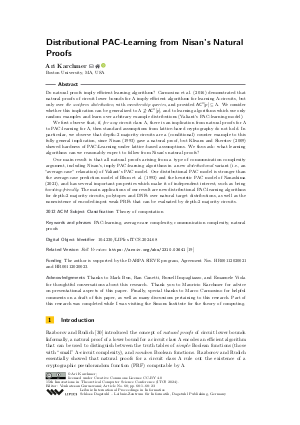LIPIcs.ITCS.2024.68.pdf
- Filesize: 0.91 MB
- 23 pages

 Creative Commons Attribution 4.0 International license
Creative Commons Attribution 4.0 International license




































Feedback for Dagstuhl Publishing